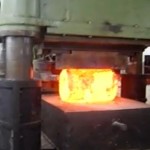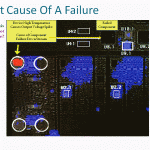Development of TPM
Total productive maintenance (TPM) is one of the foundation blocks of any lean manufacturing implementation; after all it is not possible to improve our processes if we cannot rely on our equipment and machines. Combined with 5S; TPM provides a firm foundation on which to build sustainable improvements to our business.
After world war two many companies in the US were starting to use preventative maintenance and even some forms of predictive maintenance techniques to try to improve the reliability of their machinery which on the whole was maintained through a maintenance department.
Total Productive Maintenance as we know it today was developed at a company called Nippondenso (an important supplier of Toyota.) who looked at what the American companies were doing and tried to combine with aspects of what at the time was called total quality control (TQC). TQC has since become what we call total quality management (TQM) and was found not fit very well with the maintenance methods that they were trying to implement.
Therefore they adapted the TQM methods to better fit with their requirements and created total productive maintenance (TQM); a maintenance program that involves all with the organization just as TQM does. Also similar to TQM in that many of the responsibilities for day to day activities are placed into the hands of the operators and they became more involved in the actual maintenance of the machine freeing the experts to do more preventative works. TQM and TPM also focus very much on the prevention of problems rather than firefighting after the event.
Maintenance Programs
Below are descriptions of maintenance methods that can be implemented alone or integrated within the TPM program.
Breakdown maintenance
Breakdown maintenance is maintenance that is done after the event, we wait for the machine to break down before we take any action. Whilst this is far from ideal it still has its place if machinery that fails is quick and easy to repair inexpensively without impacting on production.
Preventive maintenance
Preventative maintenance can be thought of as being like taking your car for a service; we service each machine based either on the time passed or the number of cycles completed; conducting inspections and component replacements as specified by the manufacturers or past experience. Whilst this helps to maintain equipment in an optimum condition we often find ourselves replacing components that appear to be perfectly fine just in case they fail in the near future.
Predictive maintenance
Predictive maintenance builds on preventive maintenance and uses techniques such as infrared thermal imaging, vibration analysis and oil analysis to try to highlight components that have begun to wear and are likely to fail. Through these techniques we can prolong the use of components that may otherwise have been just replaced at a regular service and potentially save significant sums of money as well as highlight other problems that may not be caught at all by standard preventive maintenance.
Corrective Maintenance
Corrective maintenance is very much part of TPM, we improve machines to make them easier to clean and maintain; this may involve the rerouting of parts of the machines such as lubrication pipes to make them easier to monitor and maintain, or modifying the machine to prevent the creation or ingress of dirt inside the machine. The aim of corrective maintenance is to help those responsible for conducting the maintenance and monitoring the machines to do it easily and safely and efficiently.
Maintenance prevention
Through the analysis of maintenance data the maintenance technicians can work with the designers of our machines to create machines that are more reliable. Maintenance and repairs that are required can be made as simple and as easy as possible to reduce time, save money and improve safety.
Autonomous maintenance
The involvement of the operators in TPM just as in TQM shows itself through autonomous maintenance, independent maintenance carried out by the operators themselves rather than the traditional “we run the machines, maintenance fix them” attitude. The operators become responsible for the day to day maintenance of the machines with regards to things like lubrication and bolt tightening as well as in some case minor repairs and replacements. This frees the maintenance technicians to become more involved in making improvements to improve machines reliability and maintainability.
TPM Video
OEE – six big losses
Overall equipment effectiveness or OEE is a very important measure within TPM. One of the main aims of TPM is to reduce the six big losses;
- Breakdowns
- Setup and Adjustment losses
- Idling and minor stoppages
- Reduced Speed
- Defects and rework
- Start-up losses
These losses refer to more than just breakdowns of the machines, they also refer to the quality of product produced and to how efficiently we set up the machines and run them forcing us to improve every aspect of the machine through lean manufacturing tools such as PokaYoke and SMED (Single Minute Exchange of Die.) OEE is calculated from these six losses and gives us an overall picture of the efficiency of each individual machine or piece of equipment. This allows us to focus our improvement efforts where they are needed most.
If you have any questions about what is TPM, total productive maintenance or would like to leave a comment please do so below.



I am a food technologist and working as a factory manager and I would like to know more about TPM Program and how it can help me within my field of experience.
I am working as atata motors and I would like to know more about TPM Program and how it can help me within my field of experience.
What is the industrial engineering role in TPM activity?
I worked in as an Asset Optimization Engineer during which I used tools like TPM, Six-Sigma, RCA and RCM. Now I am working in an industry in which Reliability improvement program is existing involving only RCM and RCA but they are not buying tools like Six-Sigma and TPM. I believe TPM is the only tool that has potential to induct improvement and ownership culture but however I am not able to convince my team as I cannot prove it to them with short term benefits.